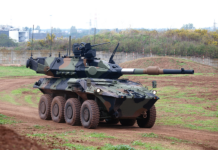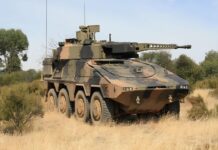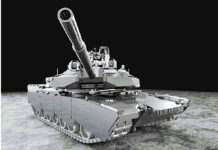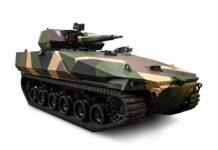The US Army is currently modernising its combat vehicle fleet in order to meet more challenging adversaries. This effort combines upgrading in-service systems and introducing completely new combat vehicles.
The US Army is currently pursuing 35 high-priority acquisition programmes covering six capabilities categories. These include various vehicle classes as well as improved-range tube artillery. Overall, the goal is to make Army formations more mobile, more survivable, and more lethal. There is a notable shift toward weapon systems optimised for confronting peer- and near-peer opponents. Despite the urgency to modernise, budget constraints are forcing the Army to balance between development and acquisition on the one hand, and maintaining operational readiness on the other. Fiscal Year (FY) 2024 budget request documents presented in early 2023 show an anticipated 18% reduction in procurement funding for weapons and tracked vehicles compared to the 2023 budget. This will result in slower than expected acquisition rates for some systems.
Abrams MBT
The M1A2 Abrams main battle tank (MBT), which achieved initial operating capability (IOC) in 1993, remains the ‘armoured fist’ of the US Army. The service continues to upgrade the weapon system to counter improved offensive and defensive capabilities of potential adversaries. The current US Army inventory is composed primarily of the M1A2 Systems Enhancement Package Version 2 (SEPv2) which first entered service in 2006.
The current production version is the more modern M1A2C which until 2018 was known as the M1A2 SEPv3. In addition to newly-built tanks, M1A2C variants can also be created by refitting older tanks to the new standard. While the Army has not revealed a final procurement goal regarding new-build tanks, it has announced its intent to convert all 1,500 SEPv2 MBTs to the M1A2C standard. This is expected to take until 2028. Export agreements for newly-built M1A2C MBTs have been signed with Australia and Poland.
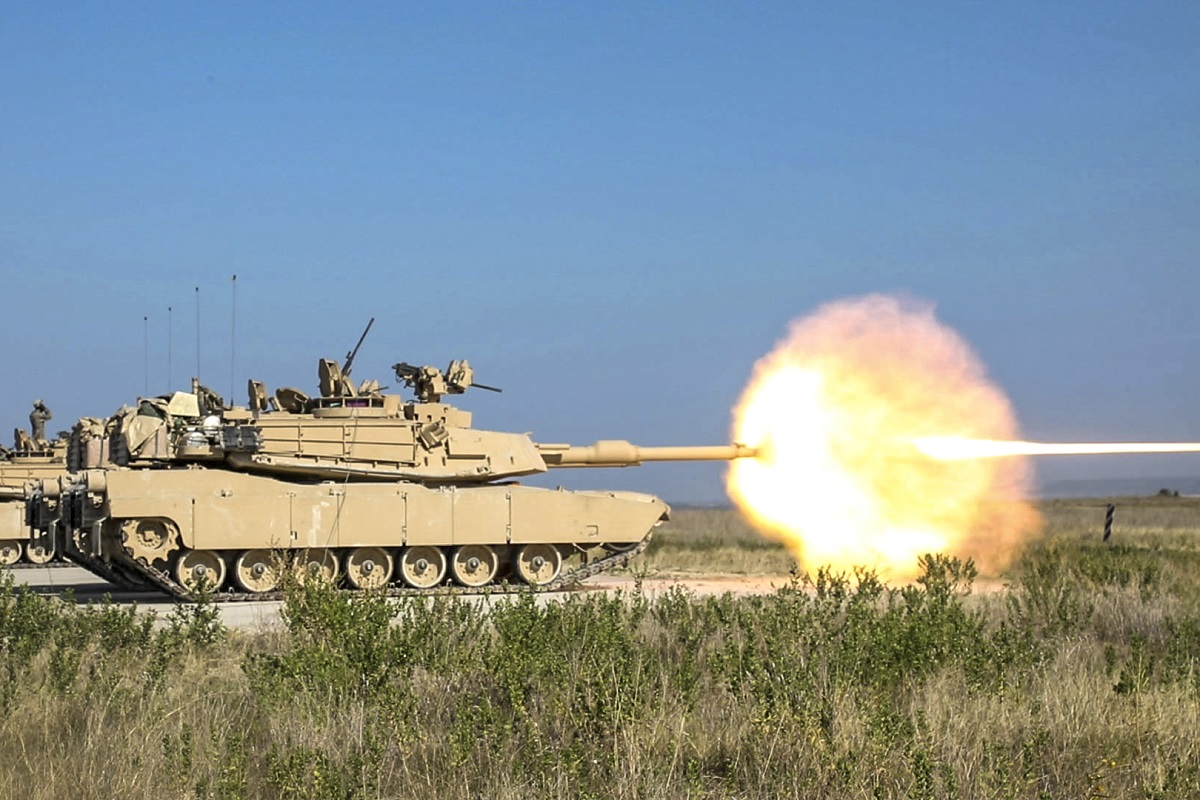
Credit: US Army
The M1A2C uses the same Watervliet Arsenal M256 120 mm L/44 main gun (derived from the Rheinmetall Rh-120 L44 gun) and auxiliary armament as the SEPv2. Performance parameters such as speed and operational range are also virtually unchanged. However, the M1A2C variant is significantly enhanced in terms of communications, lethality, sustainment, reliability, fuel efficiency and survivability. This was accomplished by integrating numerous new or improved components:
- the enhanced fire control computer can accommodate a broader selection of modern munitions types, including programmable munitions, and can integrate new munitions as they are introduced;
- the tank has been equipped with a high-resolution, digital, third-generation IR gunner sight, sometimes referred to as the ‘improved forward-looking infra-red’ (IFLIR). Compared to the earlier sight, this enables the tank to locate targets at greater distances, even under degraded visual conditions;
- the turret-mounted common remotely operated weapon system (CROWS) bearing the 12.7 mm machine gun now has an improved camera;
- an auxiliary power unit has been added to support electric and electronic systems while the main engine is off, enabling silent overwatch operations and preservation of fuel;
- a vehicle health management system continually monitors the tank’s components to enable predictive maintenance and boost reliability;
- the CREW Duke V3 counter remote-controlled IED electronic warfare system offers protection against roadside bombs;
- additional passive armour has been added to the hull and turret to increase protection against anti-tank weapons, as well as mines and IEDs;
- the tank can be fitted with appliqué explosive reactive armour (including the Abrams Reactive Armour Tile (ARAT) types I and II), as well as the Trophy active protection system (APS).
The net result of these upgrades is a vehicle weight of 66.7 tonnes (73.5 US tons), nearly 2.2 tonnes more than the SEPv2 in its basic configuration, with this rising to a maximum of 83.7 tonnes (92.23 US tons) when fitted with the Force Protection (FP) armour kit, Trophy, and a mine roller. In 2022, the 2nd Armored Brigade Combat Team (ABCT), 3rd Infantry Division – nicknamed the ’Spartan Brigade’ – became the first major unit to replace its legacy equipment with the M1A2C.
In February 2023, the ABCT conducted a first field evaluation at the Army’s National Training Center (NTC) in California, testing the early interoperability of the new MBTs with the brigade’s other major weapon systems. “The cycle at the NTC is there to help stress us, [and learn to] sustain and build combat power with the new equipment,” Spartan Brigade Commander Colonel Ethan Diven told reporters in October 2022. “[We’re] trying to mirror what it would be like to deploy into an austere environment, from fort-to-port, and then generate combat power on a foreign soil.”
In early 2023, a second unit, the 1st ABCT, 3rd Infantry Division, began receiving the upgraded MBTs. Some lessons have already been learned. The new tank’s weight increase now makes recovering the Abrams in the field more difficult. Until a new, more powerful recovery vehicle enters service, the Army now plans to use two M88A2 recovery vehicles to retrieve the SEPv3.
M10 Booker
The Mobile Protected Firepower (MPF) programme was initiated in 2015 to provide light infantry units with an organic armoured direct fire capability. Despite its appearance, the Army emphasised that the tracked, turret-equipped combat vehicle is not a light tank because the mission profile is considerably different. Functionally the MPF fills the capabilities gap between the Abrams MBT and the Stryker ICV by acting as a fast, highly mobile fire support vehicle for advancing dismounted infantry (while tanks primarily act as the spearhead for a mounted mechanised charge).

Credit: US Army
The MPF’s 105 mm main gun fires a range of in-service munitions meant for engaging light armoured vehicles, fortified positions, bunkers and dismounted personnel in order to eliminate obstacles and suppress opposition in support of friendly infantry. Depending on the munition, the maximum effective range can reach 4 km. The Booker’s turret and fire control system shares many components in common with the Abrams family. The commander’s station is equipped with the Safran Optics PASEO long-range panoramic targeting sight which permits the commander to independently search for new targets or threats while the gunner combats current targets, speeding up the engagement tempo.
The 38 tonne MPF is configured to be light and small enough to cross most bridges and manoeuvre in confined urban terrain; it is air transportable by C-17, but cannot be airdropped. The vehicle has a four-person crew consisting of the commander, driver, gunner, and loader.
In terms of protection, the Booker has multiple protective layers against direct and indirect fire, RPGs, and underbody threats. The base armour can be supplemented with modular appliqué protection, and to improve crew survivability, the turret is provided with blowout panels above the ammunition storage compartment. According to Kevin Vernagus, General Dynamics program director for the MPF, this includes add-on armour on the sides and belly plate, and leaves a margin for growth. “As threats evolve or new materials become available, you simply can take off one set of armour and put on new material or thicker or thinner armour as necessary,” he said. Vernagus added that the MPF is also configured for mounting an Active Protection System (APS) to defeat ATGMs.
The Army formally designated the MPF as the M10 Booker on 14 June 2023. The name honours two soldiers who served in World War II and Operation Iraqi Freedom, respectively. The programme passed Milestone C in June 2022, transitioning from a middle-tier of acquisition (MTA) rapid development phase to an acquisition programme of record. In that month, General Dynamics Land Systems (GDLS) was awarded the low-rate initial production (LRIP) contract for up to 96 MPF. The order is valued at USD 1.14 Bn.
LRIP deliveries are slated to begin in late 2023. This will enable Initial Operational Testing and Evaluation to proceed in late FY24. This schedule will permit GDLS and the Army to eliminate potential weak points. According to the January 2023 DOT&E report, the prototypes tested in 2021 during the programme’s competitive stage were immature. The survivability of the vehicle design was confirmed, but vulnerabilities regarding operational effectiveness were detected during the MTA phase, which the Army is currently working to correct.
Concerns include the vehicle’s acoustic signature, the build-up of toxic fumes in the tank when firing the main gun, and the need to improve the compatibility of the MPF’s sensors and dismounted infantry sensors. Cyber survivability testing had also not been conducted during the operational testing, but will be evaluated as part of the future operational testing in support of the FRP decision which is planned for Q2 of FY25.

Credit: US Army
Despite these concerns, the 2021 evaluation scenarios showed that companies equipped with the MPF achieved their mission objectives faster, more consistently, and with fewer casualties than units without the fire support vehicle. Current planning calls for procuring a total of 504 vehicles through 2035. The first operational battalion, outfitted with 42 vehicles, is scheduled for Q4 2025. Basing plans call for one Booker battalion per division, with individual companies being detached to support armoured brigade combat teams (ABCTs).
AMPV
The Armored Multi-Purpose Vehicle (AMPV) will – over time – replace the Vietnam-era M113 armoured personnel carrier. The new vehicle is designed to offer improved survivability, occupant protection, mobility and power generation, and will be better suited to operate in the face of intense electronic warfare (EW) and cyberwarfare. The AMPV provides 78% more internal volume than the M113. The US Army plans to acquire 2,936 units over a 20-year timespan. Most will be allocated to ABCTs; approximately 30% of the current ABCT inventory consists of M113s.

Credit: US Army
BAE Systems won the AMPV Engineering and Manufacturing Development (EMD) contract in 2014. The first prototype was completed in December 2016. The firm was selected to produce the AMPV in 2018. In terms of appearance, BAE’s design can be thought of as a turretless Bradley variant, with the vehicle sharing many components in common with the M2/M3 Bradley, including the chassis, engine, transmission, and suspension.
This reduces the ABCT’s logistical burden by minimising the diversity of spare parts to stockpile and to carry in the field, while simplifying maintenance crew training. There are of course major differences between the Bradley and the AMPV, such as the aforementioned lack of a turret (instead, AMPV can be equipped with an armoured gun mount), and the hull has been redesigned to enhance protection against mines, IEDs, RPGs and small arms.
The AMPV is being configured in five variants. Vehicle crew will consist of two or three soldiers, depending on the variant. The greatest number of AMPVs will be the M1283 General Purpose vehicles suitable for personnel transport and logistics support including battlefield resupply. In addition to the crew, these will transport six combat-equipped infantry soldiers.
Other variants include the M1284 Medical Evacuation vehicle (capacity: six litter patients); the M1285 Medical Treatment vehicle (which deploys an attached soft shelter when stationary and can treat four patients simultaneously); the M1286 Mission Command vehicle serving as the ABCT’s mobile command post, and the M1287 120 mm Mortar Carrier vehicle. A sixth variant configured to replace current engineering vehicles based on the M113 is under consideration.
The low-rate initial production of the AMPV was approved in January 2019 with an initial award for the delivery of 450 vehicles. Supply chain issues and COVID restrictions prevented BAE from meeting the original July 2020 delivery of the first units (they actually rolled out in September 2020), forcing the baseline programme schedule to be reset in January 2021. The Army conducted full-up system-level (FUSL) live-fire testing from May 2021 through to May 2022, followed by an Army IOT&E in July 2022. The FUSL events used production-representative vehicles to evaluate vehicle and crew vulnerability to kinetic threats, and tested the AMPV’s automatic fire-extinguishing system. These events were conducted in accordance with test plans approved by the Pentagon’s DOT&E.
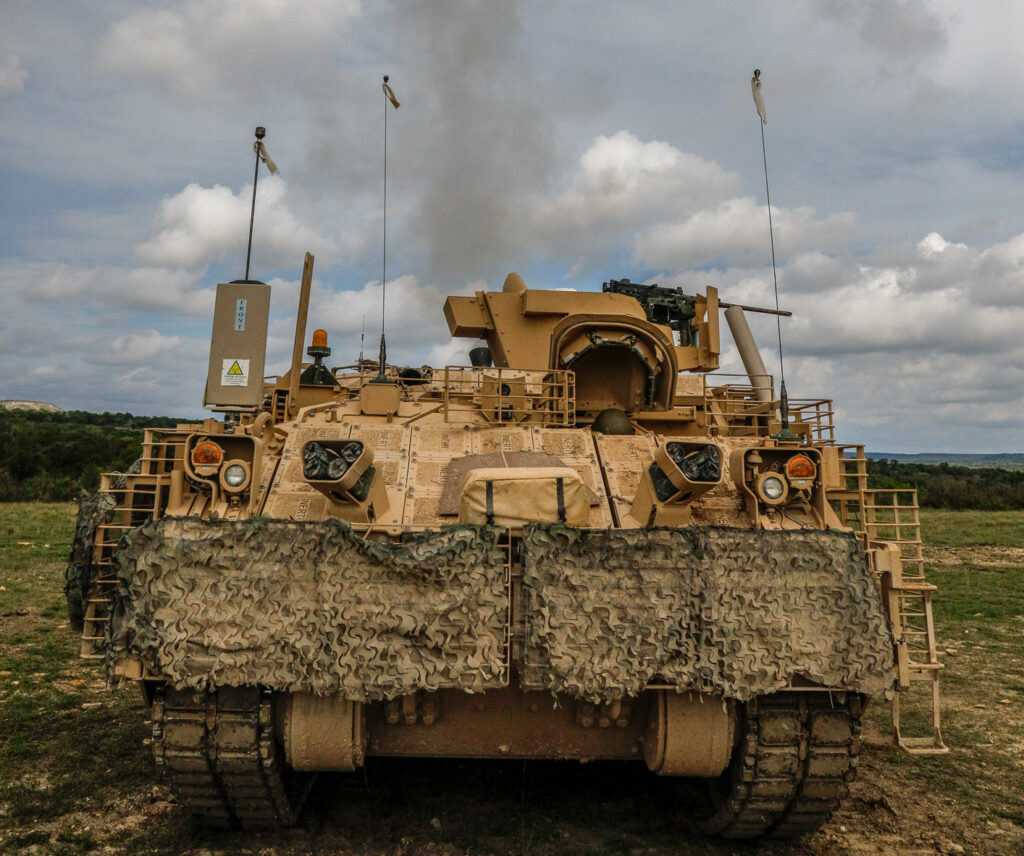
Credit: US Army
Supply chain and production impasses have now been resolved. The entire LRIP production lot has been completed. The 1st ABCT, 3rd Infantry Division became the first operational unit to be equipped with the AMPV in March 2023. On 1 August 2023, the Army announced its decision to approve FRP, and BAE announced receipt of the formal FRP contract award on 1 September 2023. The initial contract is worth USD 797 M, and covers an unspecified number of vehicles. Anticipated follow-on awards will increase the procurement program’s value to more than USD 1.6 Bn. The Army has once again increased its production goals to 16 vehicles per month, which would equip one and a half brigades per year.
JLTV
The Joint Light Tactical Vehicle (JLTV) was conceived to provide better occupant protection and survivability than the up-armoured Humvee, but with less weight and greater manoeuvrability than MRAP vehicles. The combination of organic armour and supplemental modular armour permits mission-specific defence against direct-fire threats and IEDs. The JLTV is produced in two chassis variants, the four-seat Combat Tactical Vehicle (CTV) and the two-seat Combat Support Vehicle (CSV).
The CTV can be configured for General Purpose, Heavy Gun Carrier or Close-Combat Weapon Carrier roles; the CSV features a flatbed cargo space for utility missions and can also support an enclosed shell. While the JLTV is utilised by every service branch, the US Army and US Marine Corps (USMC) are by far the greatest operators, with current fleets of circa 12,500 and 3,700 vehicles respectively. Foreign military orders have been placed by Brazil and several European NATO allies. Overall, as of 1 June 2023, a total of 20,000 JLTVs have rolled off the Oshkosh assembly line.

Credit: US Army
The original JLTV LRIP contract was awarded to Oshkosh Defense in 2015, with deliveries to the Army and USMC beginning in early 2019; the FRP decision was announced in June 2019. As planned at the outset, the Army (which manages the JLTV programme for all services) conducted a second competition in 2022 to award a new contract for continued production of the vehicle. The purpose of this second contract competition was to ensure that the Pentagon continues to receive high quality manufacturing and maintenance services at the best price. From the beginning, the Army acquired the rights to the JLTV technical data to avoid becoming dependent on one contractor.
On 9 February 2023, the Army announced that the follow-on contract had been awarded to AM General. Oshkosh filed a protest against this award, but on 12 June 2023 the Government Accountability Office denied the challenge, finding that the Army had equitably evaluated both companies’ proposals. Oshkosh will continue to produce the JLTV through the end of 2024 (as planned under the original FRP agreement), with AM General activating its assembly line around August 2024.
The new contract will have a base fulfilment period of five years, plus an additional five one-year optional ordering periods. The initial order under the new contract is for up to 20,682 vehicles and up to 9,883 JLTV-optimised trailers. While it is currently unclear whether AM General will propose any actual vehicle design changes, several technological improvements were either required by the Army during the competition phase, or offered by the two competitors. These include enhanced corrosion protection, improved fuel efficiency, anti-idle technology, lithium-ion batteries, an automated guided vehicle system, radio frequency identification, and GPS traceability.
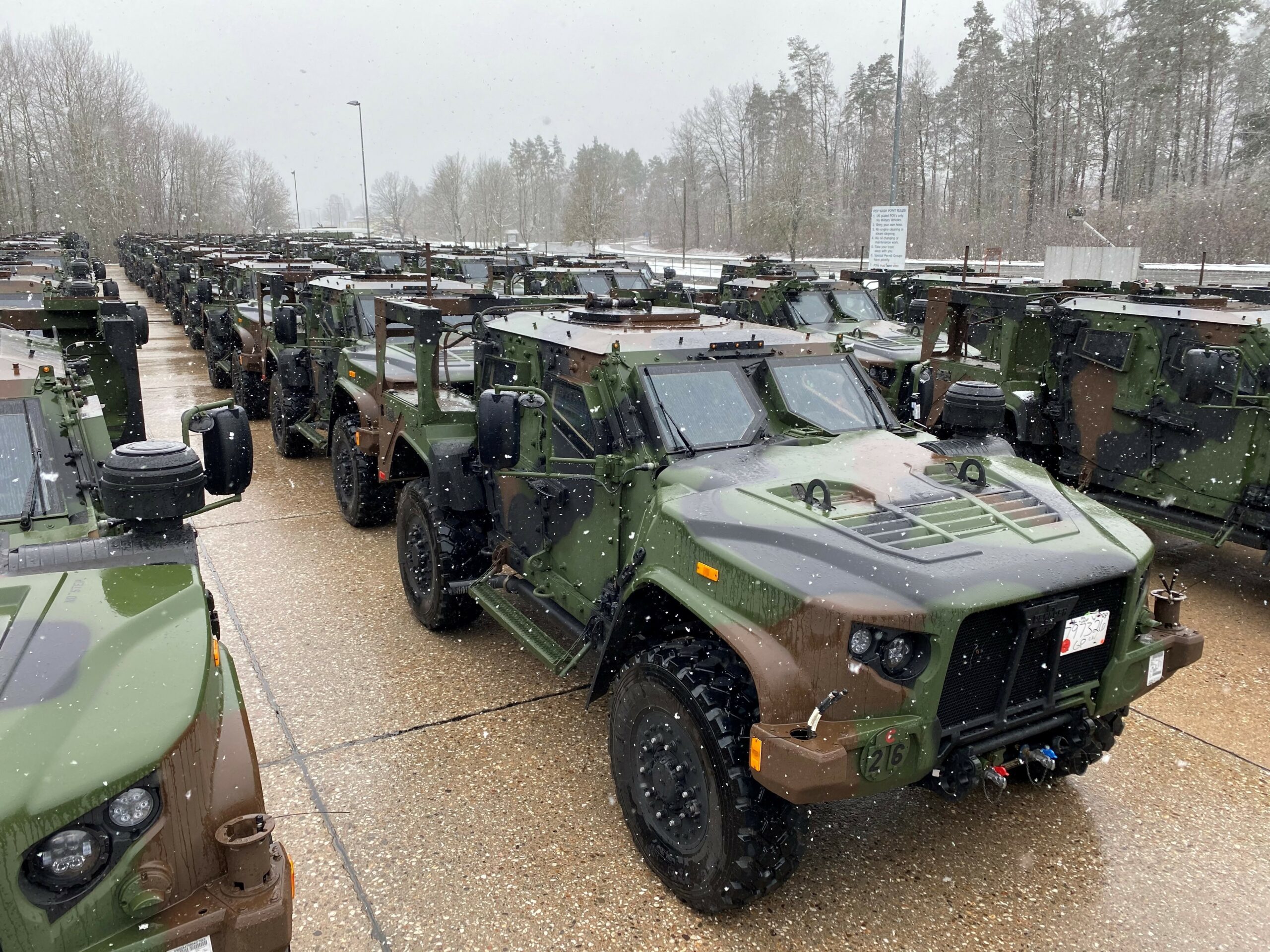
Credit: US Army
In a March 2023 report, the Congressional Research Service (CRS) cautioned that some uncertainties remain regarding the JLTV programme. These include restructuring plans announced by the US Army since 2022 (as well as downsizing and operational reorientation by the USMC), which might ultimately change the number of vehicles required by the forces. The USMC is also introducing significant modifications to some in-service vehicles, enabling the JLTV to serve in a counter-UAV and short-range air defence role, or as a remotely operated carrier/launcher for anti-ship missiles. Cumulatively, structural and operational developments in the Army and USMC could impact unit cost and production tempo over the duration of the new contract.
M109A7
The M109 self-propelled howitzer family was introduced in the 1960s. Since then, the tracked, turret-equipped armoured gun system has been upgraded many times. The M109A6, designated the Paladin, was introduced in 1994, with a total of 950 acquired by the US Army by 1999. The Army is now introducing the M109A7, which was originally designated M109A6 PIM (Paladin Integrated Management). While it retains the M109 family designator, the A7 variant features so much innovation that some analysts have expressed the view that it virtually constitutes a new weapon system.
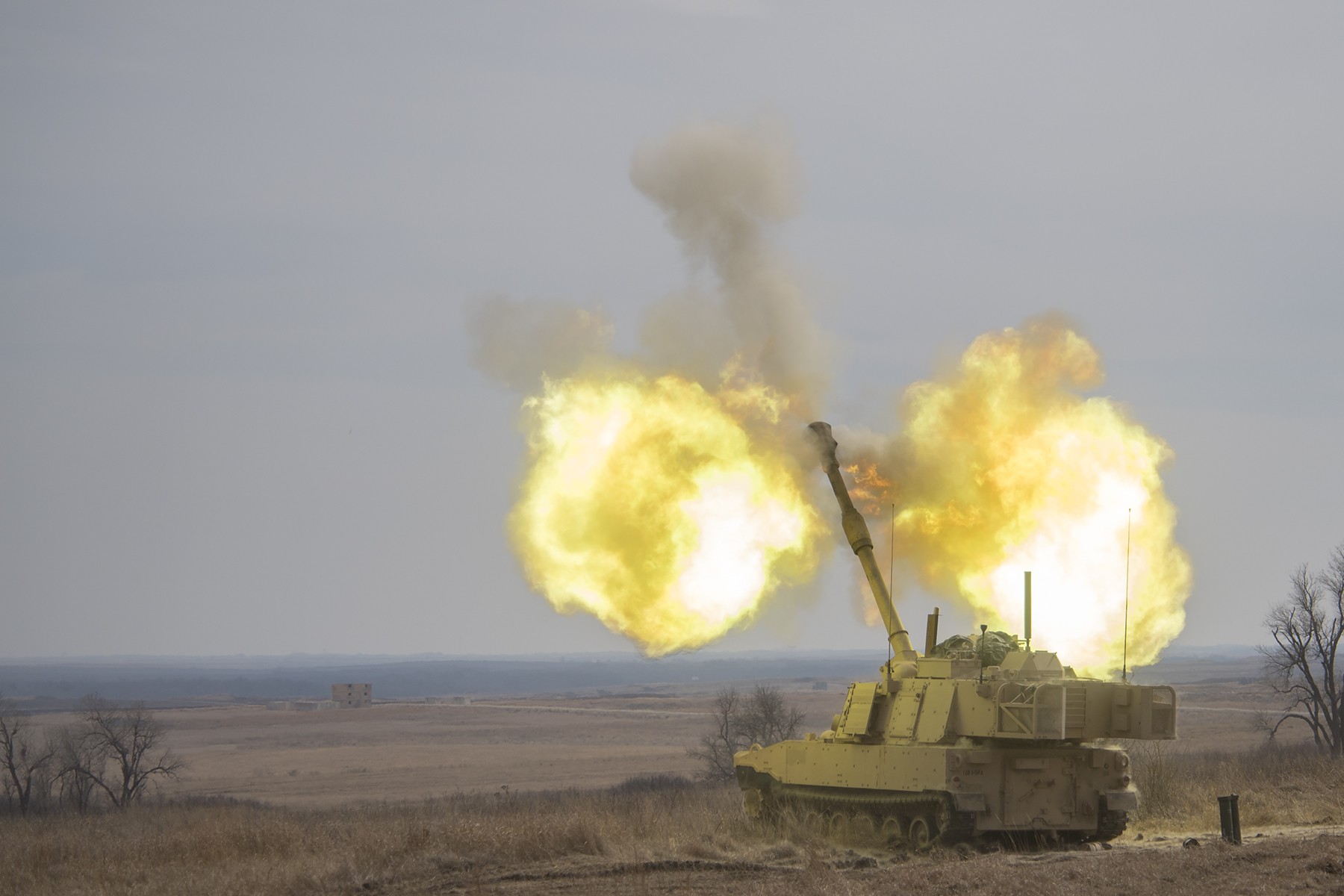
Credit: US Army
Built by BAE Systems, the new howitzer retains the turret and main gun of the M109A6, but includes upgrades such as a 600-volt electric drive system to replace hydraulic drives in the turret and gun system. The lower section of the body has been completely replaced. Like the AMPV, the M109A7 has some components in common with the M2/M3 Bradley, including (upgraded) engine, (improved) transmission, as well as some of the suspension and tracks.
Further important upgrades include a 70 kW, 600 volt onboard power system (the older Paladin’s power system is rated at 18.5 kW), a digital architecture, digital fire control system, digital crew displays, and an integrated blue force tracker. On the one hand, the upgrades and the commonality with other armoured systems streamline peacetime and battlefield maintenance within the ABCT.
They also boost performance – including power production capacity, weight-bearing capability, and speed – thereby ensuring that the artillery can keep pace with the remaining armoured vehicles; the extra weight capacity can also permit mounting an applique, mission-configurable armour package to further increase crew survivability. Offensively, the M109A7’s fire control system is configured to receive a fire mission and (using the onboard positional navigation system) calculate the firing solution on the move, then fire within 60 seconds of stopping.
Improved acceleration capability permits the howitzer to evacuate the firing position rapidly to evade counterfire. In addition to the mobile gun system, a full system set also includes the new M992A3 ammunition carrier to restock the howitzer’s magazine in the field. This companion vehicle is also known as the CAT (carrier, artillery, tracked), with a carrying capacity for 95 shells and an integrated loading arm for transferring ammunition.
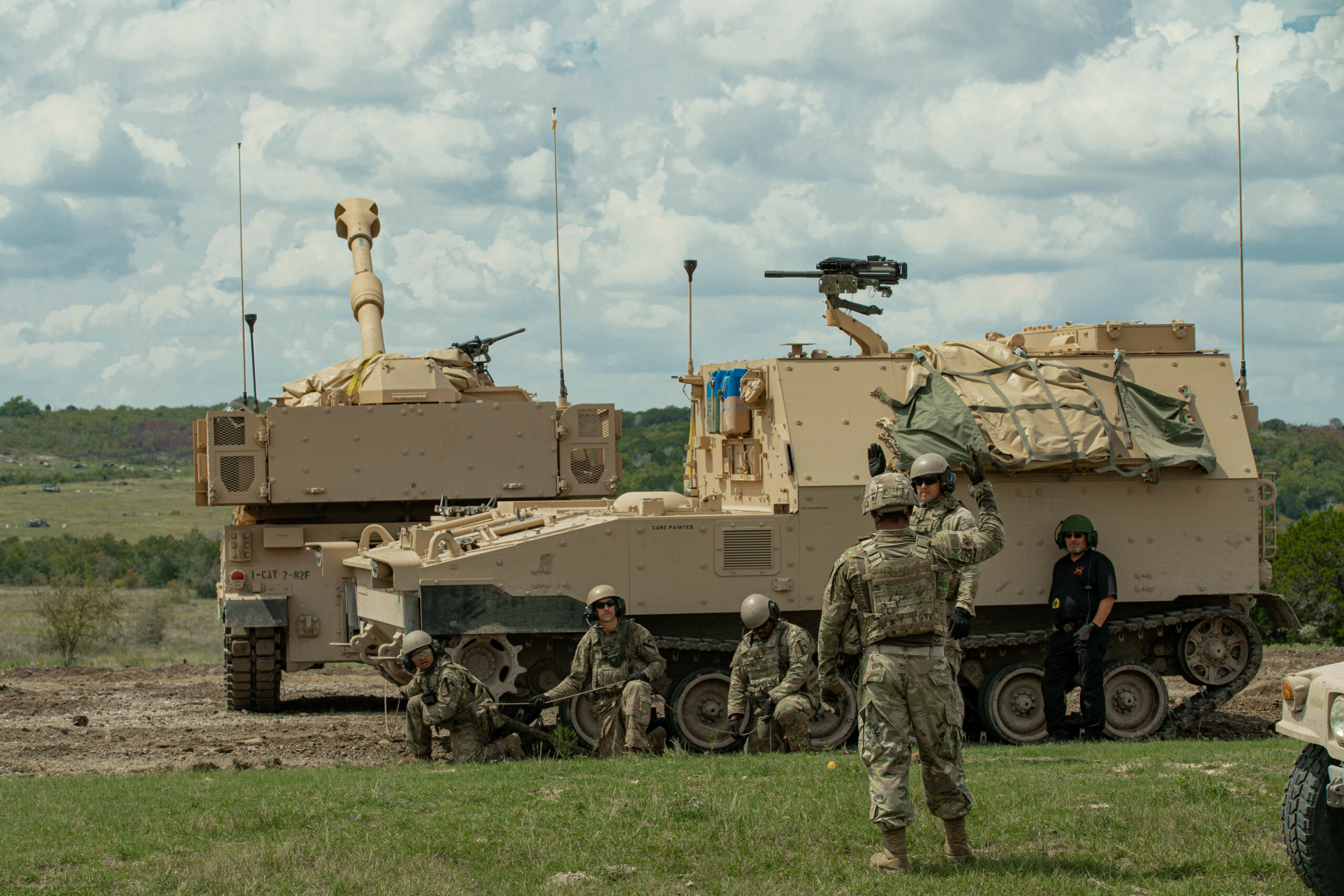
Credit: US Army
The PIM modernisation programme was launched in 2007, leading to an R&D contract award to BAE Systems in 2009 and delivery of prototypes in 2011. The LRIP contract for 65 vehicle sets was awarded in October 2013, with initial deliveries occurring in April 2015. Production qualification testing was conducted using LRIP units. The FRP contract was to be awarded in December 2017.
However, FRP was delayed until March 2020 due to capacity issues at the company’s plant. The Army finally authorised initiation of full-scale production in February 2020. The first operational unit to replace its M109A6 howitzers with the M109A7 was the 3rd BCT of the 1st Cavalry Division, which received its vehicle sets in August 2020. The Army is expected to complete acquisition of all 580 vehicle sets by the end of the 2020s. The M109A7 is due to remain operational until 2050.
Future Planning
The M109A7 also serves as the basis for the XM1299 Extended Range Cannon Artillery or ERCA. The developmental howitzer is expected to provide precision fire at a range of up to 70 km (depending on ordnance type), versus the 30 km range of the M109A6 and M109A7. To achieve this performance, the ERCA is equipped with a new barrel developed by Benét Laboratories. The 155 mm L58 barrel is 9.1 m long (approximately 3 m longer than the Paladin’s).
This increases the interaction time between propellant gases and projectile in the barrel, permitting the projectile to achieve greater muzzle velocity. Additional velocity gains will be achieved by utilising a new, ’supercharged’ propellant to fire both current and future ordnance. ERCA will also be equipped with an autoloader which increases rate of fire to 10 rds/min (versus 4 rds/min on the M109A7). The programme received rapid prototyping/MTA status in 2018 and is considered a high-priority acquisition goal. However, technical issues prevented completion of subsystem developmental testing by December 2022, as had been planned, meaning ERCA will likely also fail to supply 18 prototype howitzers to a field artillery battalion by the end of FY23 for operational testing.
As a result, ERCA will lose its MTA status (which is limited to five years) and revert to a traditional major capability acquisition programme. The status change will take place in late FY24.
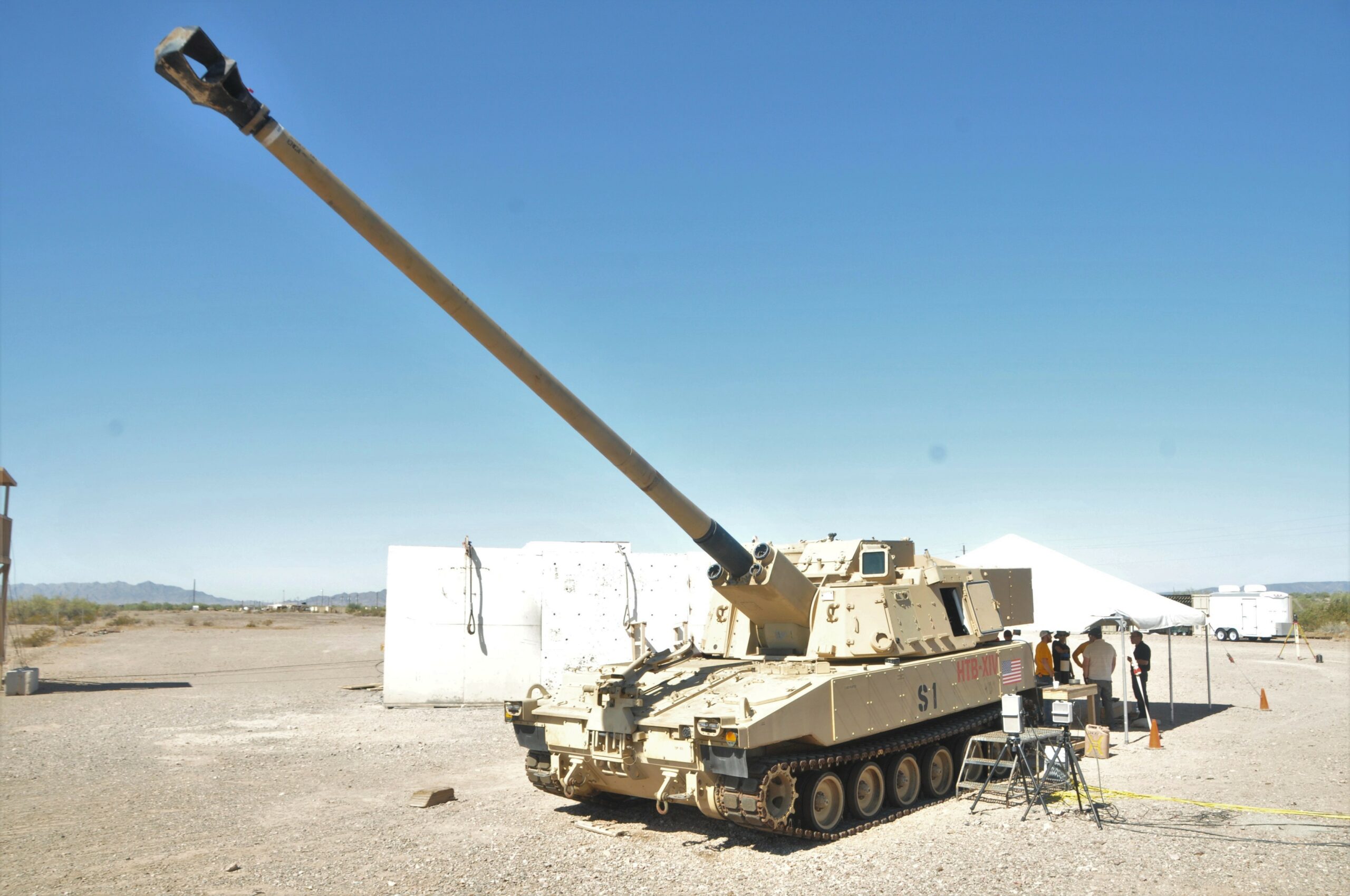
Credit: US Army
The Abrams MBT story is also far from over. Development of the M1A2 SEPv4 variant began in FY18. Considered an incremental upgrade to the M1A2C, the primary enhancements would be achieved through integration of powerful new sensors and fire control technology. Fielding the SEPv4 was planned for 2028. However, on 6 September 2023 the Army declared that it was revamping the Abrams upgrade program. While M1A2C procurement will continue (at a reduced rate), the SEPv4 has been cancelled in favour of a far-reaching redesign currently designated M1E3. “We appreciate that future battlefields pose new challenges to the tank as we study recent and ongoing conflicts” said Brig. Gen. Geoffrey Norman, director of the Next-Generation Combat Vehicle Cross Functional Team. “We must optimise the Abrams’ mobility and survivability to allow the tank to continue to close with and destroy the enemy as the apex predator on future battlefields.”
Maintenance and support are also to be simplified. “The Abrams Tank can no longer grow its capabilities without adding weight, and we need to reduce its logistical footprint,” said Maj. Gen. Glenn Dean, PEO for Ground Combat Systems when announcing the change. He added: “The war in Ukraine has highlighted a critical need for integrated protections for Soldiers, built from within instead of adding on”.
The ‘best’ technologies destined for the SEPv4 will be included in the M1E3, speeding development time and maturation. Army Under Secretary Gabe Camarillo stated during a 6 September press conference that this would include a “native APS” (the SEPv4 was to be provided with the Trophy APS). The new variant will comply with the latest modular open systems architecture standards, which will allow quicker technology insertion. This will facilitate the design of a more survivable, lighter tank that will be more effective on the battlefield at initial fielding, and easier to upgrade in the future, the Army announced.
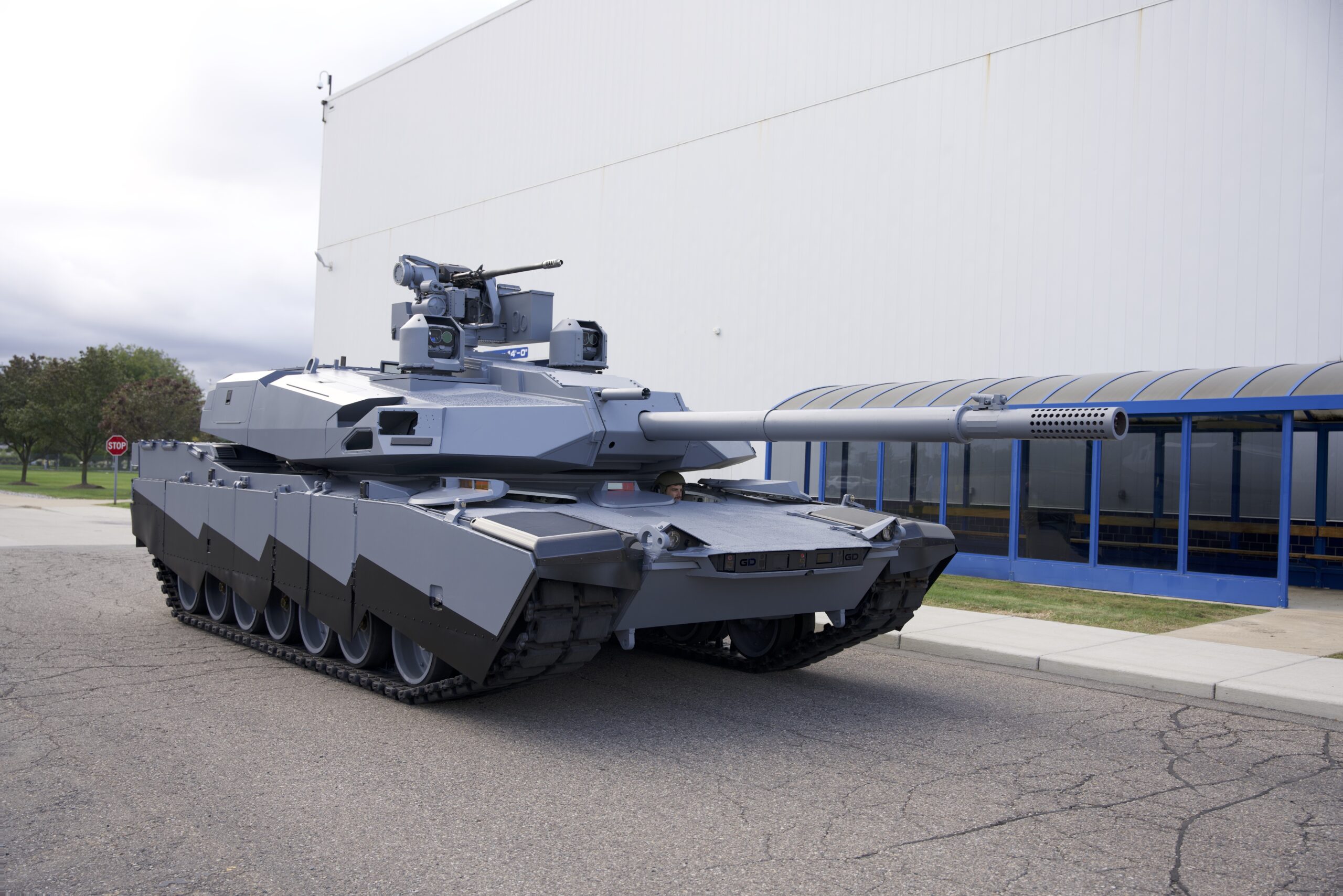
Credit: GDLS
Overall, the Army has revealed few details regarding the new vehicle, leading to considerable speculation regarding options for meeting the service’s overarching goals such as a significant reduction in weight and logistical burden (read: lower fuel consumption).
GDLS presented its AbramsX concept vehicle at the October 2022 Association of the United States Army (AUSA) defence exhibit. Next-generation innovations included a hybrid powertrain combining a diesel engine and electric batteries (which GDLS says will reduce fuel consumption by 50% and facilitate a silent watch capability); an unmanned turret with a 120 mm main gun and a remote weapon station armed with an XM914 30 mm chain gun; two 360° panoramic sights; externally located modular slots to mount sensors, countermeasures, and an active protection system; as well as an autoloader for the 120 mm gun, permitting reduction to a three-person crew.
The AbramsX is designed to include the KATALYST Next Generation Electronic Architecture (NGEA) system that facilitates operational networking with other manned and unmanned platforms. While the Army has yet to express any preferences, it remains likely that elements of the AbramsX demonstrator will make their way into the new MBT. IOC for the M1E3 (which will then be redesignated the M1A3) is planned for the early 2030s.
Sidney E. Dean






